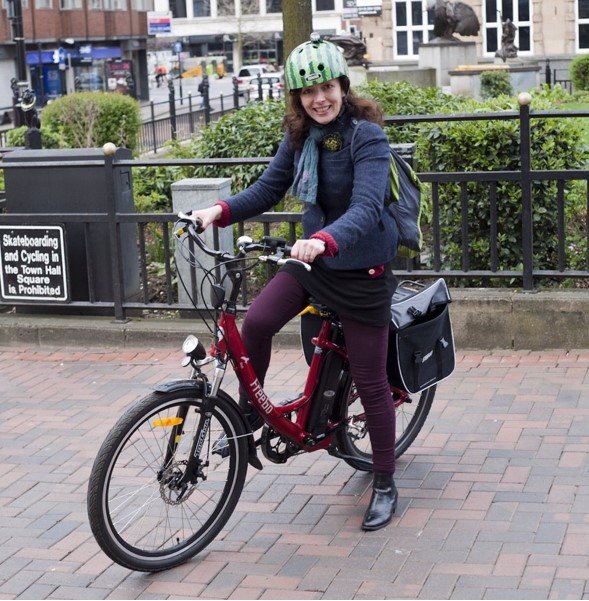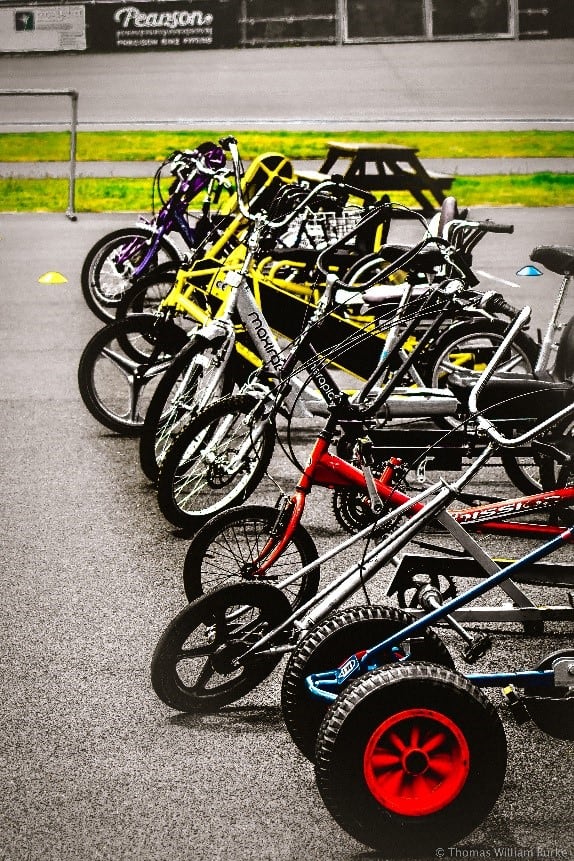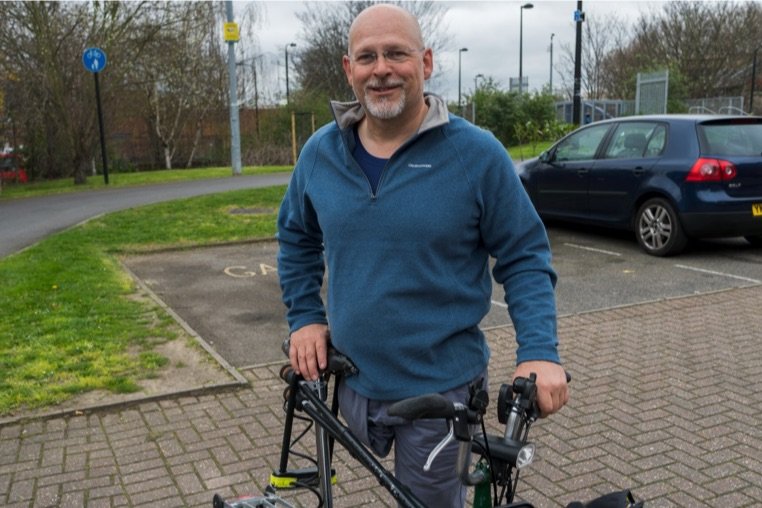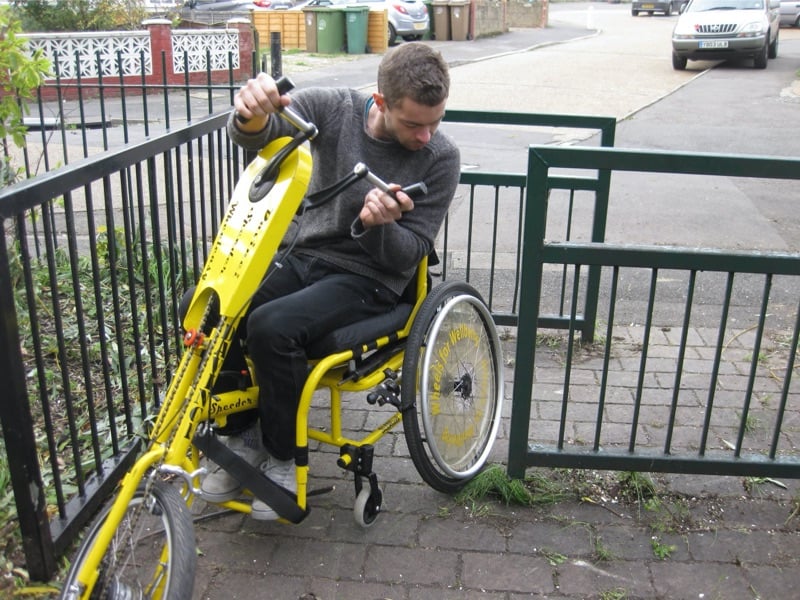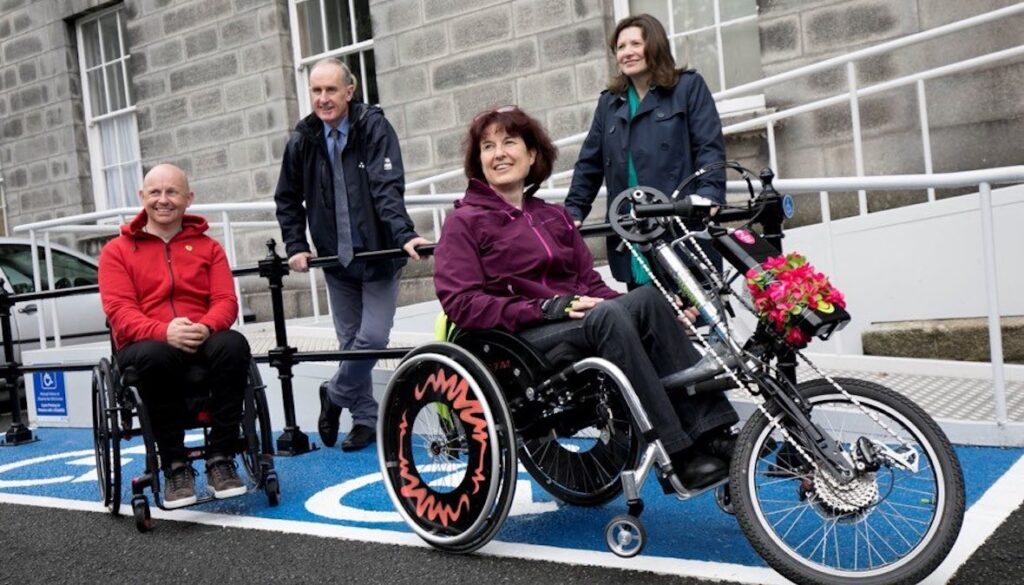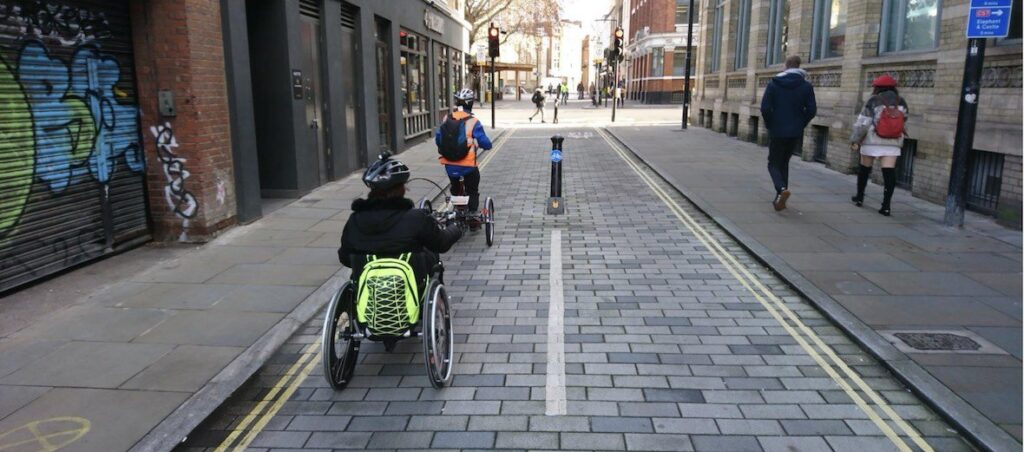Our vision
We fight for a world where disabled people are able to cycle whenever and wherever they wish – whether for transport, leisure or exercise.
Why are we campaigning?
Many aren’t aware of the fact that disabled people cycle. Growing numbers do and use standard bicycles, as well as non-standard cycles (tricycles, handcycles and e-cycles etc.) to get around. However, there are a number of physical, financial and cultural barriers that continue to prevent more disabled people from taking up cycling in the UK. These include:
Infrastructure
There is a lack of fully inclusive infrastructure across cycling networks. Narrow cycle lanes, speed reduction treatments, physical obstacles, barriers and potholes can reduce accessibility for non-standard cycles, which are often wider, longer and heavier than standard bicycles.
Cost
Non-standard cycles are typically more expensive than standard road bikes, with access to hire and loan schemes also limited. Disabled people are more likely to be on lower incomes than non-disabled people, creating a further financial disadvantage when it comes to purchasing the right cycle.
Facilities
The majority of cycle parking and storage facilities fail to accommodate non-standard cycles. Without reliably available parking facilities (and fully integrated modes of transport) disabled cyclists will be discouraged from venturing out in the first place and from participating in active travel.
Cycles not recognised as mobility aids
Many disabled people find cycling easier than walking. However, under existing legislation cycles are not listed as a mobility aid (unlike wheelchairs and mobility scooters), meaning disabled cyclists may be asked to dismount in places where ‘cyclists dismount’ signs are displayed (despite the fact that walking or wheeling a mobility aid, such as a handcycle, might be physically impossible for some).
Imagery and language
Language and imagery matter. Images of visibly disabled cyclists are under-represented in cycling, transport and design publications. Therefore people who work in cycling rarely think of the needs of disabled cyclists. Disabled cyclists are further excluded from cycling culture through use of the word ‘bicycle’, which fails to acknowledge the wider range of cycles available. Electric-assistance is often branded as ‘cheating’, which reinforces the perception that cycling is for the fit and athletic. We work to change the whole image of cycling so everyone realises that cycling is done by “people like me” and professionals understand they must design with disabled cyclists in mind.
Our objectives
BETTER INFRASTRUCTURE
- We want all local authorities to adopt either Highways England’s cycle design vehicle or the London Cycling Design Standards’ (LCDS) inclusive cycle concept when designing, or outsourcing the design of, all new cycling infrastructure.
- We want the Government to develop national cycle design standards, in order that predictably inclusive cycling infrastructure is available nationwide.
BETTER FACILITIES
- We want 5% of all cycle parking spaces to be allocated for use by disabled cyclists – matching equivalent provision for disabled car drivers.
- We want local authorities, together with local Cycle to Work providers and employers, to improve information about the different kinds of specialised cycles available to disabled people in their area.
- We want all disabled people to have access to a local inclusive cycling hub.
- We want all publicly-run cycle hire schemes to include e-cycles, whilst expanding the types of cycles they offer by working with inclusive cycling hubs.
BETTER RECOGNITION
- We want a disabled cyclists’ ‘Blue Badge’ to be piloted, which would grant disabled cyclists certain rights and exemptions.
- We want local authorities to ensure that at least 1 in 5 images of cycles depicted in their cycling strategies is of a non-standard cycle – proportionate to the number of disabled people in the UK (20%).
- We want the term ‘bicycle’ to be replaced by ‘cycle’ wherever possible in cycling-related and transport communications – ensuring that language around cycling is more inclusive.
What will we do to achieve our objectives?
- We will communicate our work, by publishing research, sharing case studies, delivering training, speaking at events and engaging with the media.
- We will influence policy, by lobbying government, responding to consultations, working with Parliamentarians and developing campaigns.
- We will build relationships with key stakeholders, by identifying those we need to work with, forming alliances and developing partnerships.

